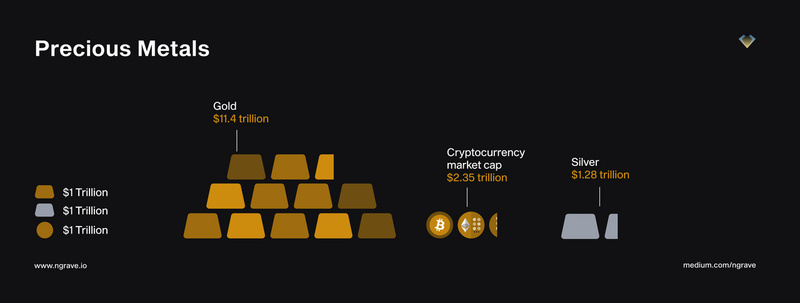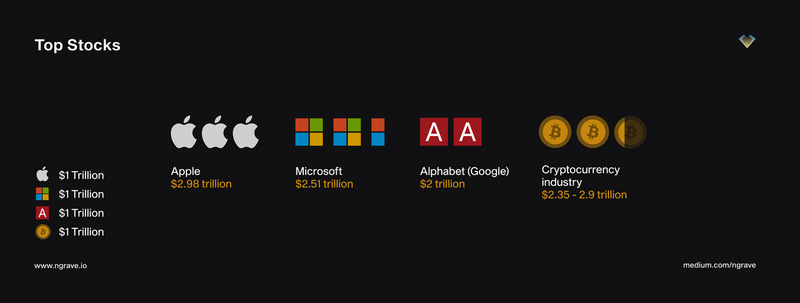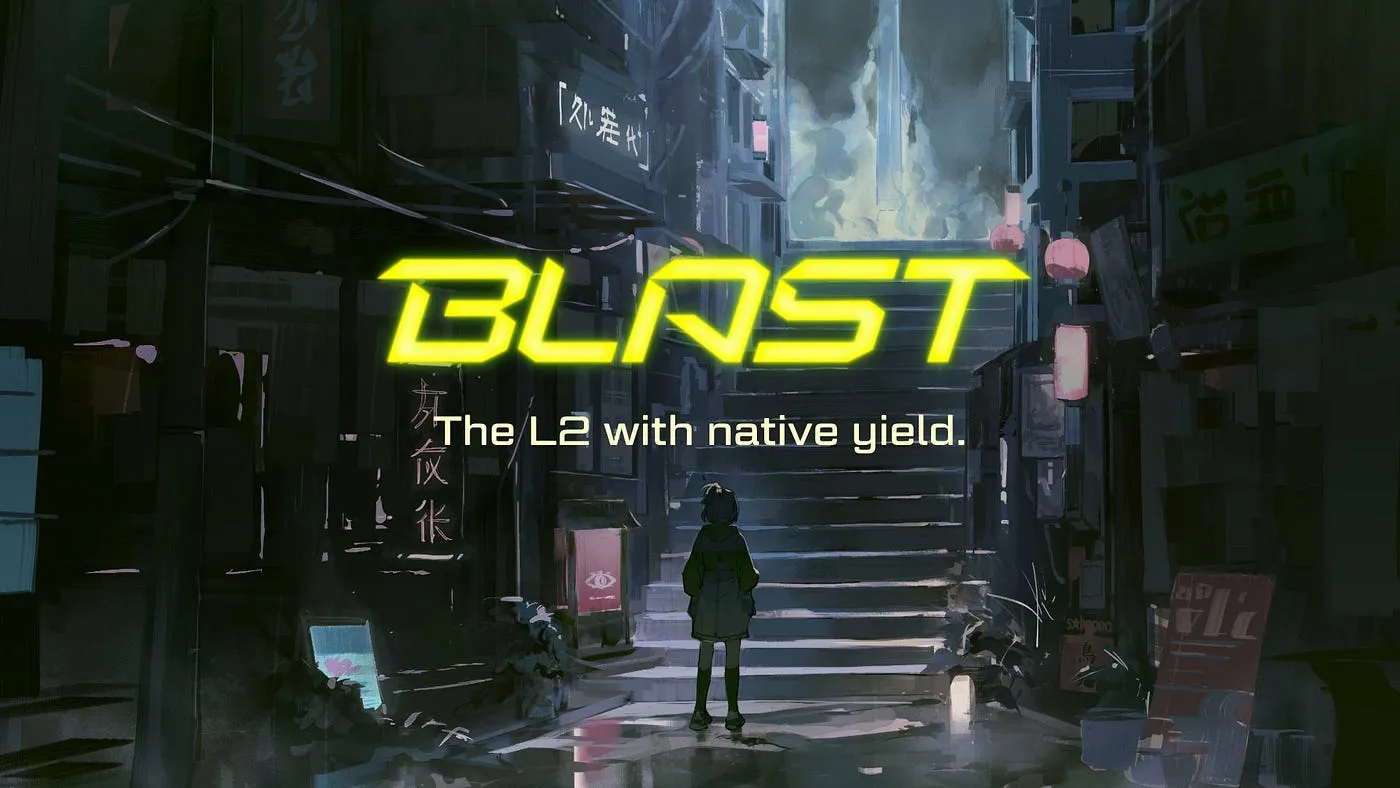Crypto Native: The Narrative Shift from Bitcoin to Web 3.0
Original Author: OP Research
1. The Genesis Era of the Crypto Industry (2008-2012)
On November 1, 2008, a mysterious person using the pseudonym Satoshi Nakamoto published a paper titled "Bitcoin: A Peer-to-Peer Electronic Cash System" in his cryptography mailing list, thus marking 2008 as the inaugural year of Crypto. The Bitcoin white paper is regarded as the "Bible" of Crypto, initiating the initial enlightenment era of Crypto, allowing people to realize that the combination of cryptographic algorithms and blockchain technology could create an unprecedented digital currency—censorship-resistant, decentralized, and anonymous. On January 3 of the following year, Nakamoto mined the Bitcoin genesis block on a small server in Helsinki, Finland, a day that Bitcoin believers refer to as "Genesis Day." After that, the concept of Bitcoin spread rapidly across the globe like wildfire, and the idea of "Code is Law" also gained traction. According to Bitcoin.org, based on cryptographic principles and blockchain technology, Bitcoin possesses the durability, portability, fungibility, scarcity, divisibility, and recognizability of a currency. Notably, on May 22, 2010, a programmer in Florida exchanged 10,000 Bitcoins mined on his computer for two pizzas. This is recorded as the first documented purchase using Bitcoin as currency, turning the theoretical use of Bitcoin into reality, thus validating and gaining trust in Bitcoin's attributes as a currency. Subsequently, individual merchants began to accept Bitcoin payments, and the world's first Bitcoin online exchange, MT.GOX, was established (on July 11, 2010). With the emergence of Bitcoin exchanges, Bitcoin had its first trading price as a commodity, and its price continued to rise, attracting more and more people to participate in Bitcoin mining.
Especially after the April 2011 report by Wired magazine on Bitcoin, its price skyrocketed, gaining widespread attention and discussion. However, most people remained skeptical about Bitcoin, questioning its credibility and even labeling it as a Ponzi scheme. Nevertheless, this did not deter many from joining Bitcoin mining for profit. Meanwhile, Bitcoin believers grew in number, firmly believing that Bitcoin had investment value and was genuinely decentralized. They believed Bitcoin would disrupt the existing monetary system and become a truly unregulated global currency, establishing a unified world currency system. It was during this time that Bitcoin's fundamentalism began to be revered, emphasizing "openness, transparency, immutability, anonymity, and decentralization." However, everything has its duality; with increasing popularity, Bitcoin began to attract the attention and exploitation of hackers and the dark web. Ultimately, following the Mt. Gox hack and the dual impact of the dark web's "Silk Road," Bitcoin entered its first winter in June 2011 after reaching its peak. To distinguish themselves from those looking to profit from Bitcoin speculation and those merely interested in Bitcoin's anonymity for money laundering, Bitcoin believers began to refer to themselves as "Crypto Natives," meaning those who genuinely own and trade Bitcoin and believe in the cryptographic algorithms and blockchain technology behind it, advocating for "Code is Law." During that period, "Crypto Natives" preached based on "fundamentalism," gaining widespread consensus for Bitcoin globally. At the same time, the Bitcoin winter did not deter "Crypto Natives" from continuing to explore the crypto world. On October 7, 2011, Bitcoin had its first follower or challenger—Litecoin (LTC), marking a crucial step in the crypto world from one to many.
This is the genesis era of the crypto industry, during which the public began to encounter Bitcoin and recognize it as a revolution of cryptocurrency against the existing monetary system. The "Crypto Natives" of this period were those who believed in cryptographic algorithms and owned and used Bitcoin.
Figure 1: Bitcoin Price Chart (2010-2012)
Source: https://history.btc123.fans/
Figure 2: Bitcoin Hashrate Chart (2009-2012)
Source: https://explorer.btc.com/zh-CN/btc/insights-hashrate
2. The Enlightenment Era of the Crypto Industry (2013-2015)
From the Bitcoin hashrate chart, we can see that during Bitcoin's roughly one-year winter from 2011 to 2012, people gradually acknowledged Bitcoin's technological status and began to attempt to participate in this "social experiment." During this period, in addition to being challenged by Litecoin and gaining recognition for its cryptographic technology, Bitcoin payments were publicly accepted by real economy suppliers, gaining recognition for its monetary value. On November 28, 2012, Bitcoin experienced its first halving, and the deflationary effect reminded people of Bitcoin's appreciation potential, causing its price to gradually rise and ultimately return to its peak, leading to a three-year boom in the crypto industry. The surge in Bitcoin's price, combined with the mass production of ASIC miners and the launch of exchanges like Coinbase, Huobi, and OKEX, provided more people with opportunities to join Bitcoin mining and increased awareness of Bitcoin and other cryptocurrencies. It was around this time that Bitcoin was dubbed "digital gold," as its commodity attributes overshadowed its currency attributes, and on November 29, 2013, Bitcoin's price surpassed that of an ounce of gold.
With a large influx of people and funds, the early infrastructure and understanding of the crypto industry gradually improved during this period. Mining machines, payment scenarios, exchanges, and financial derivatives matured, and the rapid growth of Bitcoin's hashrate is a testament to this. Consequently, people began to explore new possibilities, leading to the emergence of various cryptocurrencies beyond Bitcoin and Litecoin, such as Bitcoin Cash (BCH), Ripple (XRP), and Dogecoin. Their birth made people realize that cryptocurrencies were not limited to Bitcoin but could also include other products utilizing cryptography and blockchain technology, expanding the concept of Crypto in people's minds from Bitcoin to Crypto Currency.
However, it was also during this time that "Crypto Natives" experienced a divergence. A significant portion insisted on "fundamentalism," staunchly defending the status of native Bitcoin, while another group believed that the world was evolving and that Crypto should not be limited to Bitcoin but should start with Bitcoin and end with Bitcoin.
As Bitcoin and its followers took turns capturing public attention, another epoch-making event occurred in the crypto industry—Ethereum founder Vitalik Buterin published the initial white paper for Ethereum and conducted a presale of Ether on July 24, 2014. From its inception, Ethereum contained a grand mission: to change the crypto world. The emergence of smart contracts marked a turning point for the crypto industry, finding a future direction amid chaos, namely the next generation of smart contracts and decentralized application platforms. Ethereum, as an unstoppable distributed computer, uses blockchain as ROM, enabling miners' computations to realize CPU functions and run smart contracts as programs. Its cryptographic architecture and Turing completeness allowed a multitude of emerging industries to be born and flourish, and the crypto industry began to gradually evolve from a purely peer-to-peer currency system to a decentralized world-class computing system.
Although Ethereum's emergence was epoch-making, the crypto industry was still in an enlightenment state during this period. People further understood Bitcoin and other cryptocurrencies, and Ethereum was merely one of many cryptocurrencies. Therefore, while the definition of "Crypto Natives" changed during this period, it was still generally regarded as those who believed in the cryptocurrency system established by cryptographic and blockchain technology, but no longer limited to Bitcoin believers; any supporter of cryptocurrencies could be included.
Figure 3: Bitcoin Price Chart (2013-2015)
Source: https://history.btc123.fans/
Figure 4: Bitcoin Mining Hashrate Chart (2013-2015)
Source: https://explorer.btc.com/zh-CN/bch/insights-hashrate
3. The Industrial Revolution of the Crypto Industry (2016-2019)
The Industrial Revolution is recognized as a pivotal moment in human history. Since the outbreak of the Industrial Revolution, scientific and technological advancements have rapidly progressed, and productivity has significantly increased. The birth of Ethereum and smart contracts represents the industrial revolution of the crypto industry. After this time frame, the industry began to expand rapidly, with more and more practitioners joining, leading to the emergence of various projects. The rapid development of this era was partly due to the emergence of public chain tracks typified by Ethereum and the discovery of the value of smart contracts, such as the emergence of new financing methods like ICOs (Initial Coin Offerings) and the flourishing ecosystem of various on-chain DApps, allowing people to gradually realize the potential value of blockchain and the crypto industry. On the other hand, it also benefited from the development and improvement of crypto trading platforms represented by exchanges and related derivatives, enabling people to conduct spot and contract trading based on various currencies, injecting vitality into cryptocurrencies.
Specifically, during this phase, the infrastructure of the crypto industry further developed, with contracts, lending, and other derivatives becoming increasingly refined. In 2017, Binance exchange officially launched and quickly grew to become the world's largest cryptocurrency exchange and a giant in the entire crypto industry. Additionally, the main theme of this era was the public chain competition that began in 2018, which is why 2018 is also referred to as the year of public chains. New generation public chains represented by EOS challenged Ethereum, while competitors like EA, ADA, NEO, and BTM emerged in waves, each unfolding new stories in terms of performance, compatibility, and security.
As the challenged party, Ethereum's innovation in smart contracts brought prosperity to the entire crypto ecosystem: the emergence of new financing paradigms represented by ICOs meant that any project or even individual could directly issue their tokens and allow the public to exchange them for their tokens using BTC, ETH, or stablecoins (like USDT, USDC, DAI, etc.), significantly lowering the financing threshold. At the same time, the explosion of public chain tracks brought about a preliminary prosperous development of the on-chain ecosystem, primarily focused on gambling and gaming DApps, with phenomenon-level DApp games like F3D emerging. The gambling industry also favored this period's DApp developers due to the perfect alignment of demand with the "transparency and fairness" characteristics of blockchain technology. People also discovered for the first time that combining blockchain technology with the gambling industry was a disruptive innovation against traditional gambling and related industries, while the high stimulation and user-attracting characteristics of gambling and gaming facilitated users' entry into the on-chain ecosystem.
With the rapid development of crypto exchanges and the waning of the ICO boom, IEOs (Initial Exchange Offerings) gradually became one of the new era's melodies. IEOs compensated for the lack of regulation in ICOs through exchange endorsement, becoming one of the hottest financing methods at the time, leading to the discovery of the value of numerous platform tokens as thresholds for new investments. Consequently, the infrastructure construction represented by exchanges in the crypto industry was further improved. At the same time, exchanges like Binance still represented the rise of centralized forces in the crypto industry, but the process of moving towards complete decentralization was inevitable, which in turn reflected the industry's maturation.
Along with the tremendous changes in productivity and ecological environment came shocks to people's thoughts and perceptions. Some disadvantages of decentralization regarding security and efficiency began to slowly emerge. In June 2016, The DAO, the largest smart contract crowdfunding project on the Ethereum public chain at the time, was hacked. In the face of a significant crisis, founder Vitalik Buterin took the approach of a hard fork to recover most of the losses, resulting in Ethereum splitting into two chains: ETC and ETH. Most people chose ETH, but a group insisted that Ethereum should operate according to the most decentralized native principles and chose to remain on ETC. This controversial handling left a long-lasting discussion about "Crypto Natives" in the crypto industry: how to make the right trade-offs between centralization and decentralization in the face of security and efficiency? Is the decentralized spirit of crypto the only or ultimate solution to the crypto utopia? If not, then where is the ultimate solution? How can we find a balance between decentralization and the native crypto spirit and efficiency/security?
As early as 2014, BTM founder Chang Jia proposed the Blockchain Trilemma, stating that blockchain technology cannot simultaneously achieve decentralization, security, and scalability. Generally speaking, decentralization refers to having a large number of nodes for block production and verification; the more nodes there are, the higher the degree of decentralization. Security refers to the cost required to gain control of the network, usually anchored in the design of consensus mechanisms to real-world assets, such as proof-of-work mechanisms that are tied to computational power. Efficiency refers to the number of transactions processed per second, or TPS. The primary reason for the inefficiency of blockchain projects is that every transaction must reach consensus across all nodes. Of course, the impossible trilemma was merely a summary of past experiences in blockchain technology at the time and did not have strict theoretical derivation to support it. In this triangle, decentralization and the fairness it brings are the core values of the crypto industry, so early native crypto projects were often built strictly adhering to the principle of complete decentralization.
As the industry developed, practitioners gradually realized that if they only considered complete decentralization while ignoring security and efficiency, the development of the crypto industry would be fraught with difficulties. In this generation, new public chains represented by EOS and TRON adopted the latest DPoS consensus mechanism. Unlike BTC and ETH, which required full-chain node confirmation through PoW, EOS's DPoS mechanism only required selecting 21 super nodes through EOS's token holder voting mechanism, with super nodes taking turns confirming transaction data and bookkeeping, receiving certain rewards. This was a tilt towards operational efficiency for public chains at the cost of sacrificing some degree of decentralization. At the same time, this was also a compromise and attempt to balance the native crypto philosophy and efficiency.
Coincidentally, in 2018, when the on-chain ecosystem began to explode, due to the lack of effective oracles, gambling DApps often used the last few digits of the block hash as proof of random gambling results, which posed certain centralization risks. However, this was a pragmatic choice for early chains to ensure the reasonable and normal operation of DApps, representing one of the attempts to reasonably utilize centralized means to balance project feasibility and risk.
During this phase, people began to gradually realize the resistance of early idealistic crypto spirit (such as complete decentralization) in reality and consciously attempted to achieve a balance among efficiency, security, and decentralization through technical means. This led to different directions for blockchain technology innovation regarding the balance among these three aspects. However, more questions arose: what is the ultimate solution to the impossible trilemma? Is the impossible trilemma really impossible? The first improved steam engine of the industrial revolution has begun to roar, but the completion of the Crystal Palace still requires a long journey of exploration and effort.
Figure 5: Overview of Major Public Chain Consensus Mechanisms During This Period
Source: Huobi Research Institute
Figure 6: The Blockchain Impossible Trilemma
4. The Age of Exploration in the Crypto Industry (2020-2022)
After experiencing the crypto winter of 2018-2019 and the pains caused by the pandemic, the years 2020-2022 welcomed the third bull market since its inception, accompanied by the entry of institutional-level funds and global loose monetary policies, bringing forth a larger narrative and better innovations.
In the summer of 2020, the dimensional wall of traditional finance was broken in the decentralized world, and the lending platform Compound was the first to launch a token, which was distributed as rewards to users during a process called liquidity mining. Subsequently, countless other protocols imitating the DeFi concept emerged, leading to soaring token prices and the explosion of DeFi. We refer to that summer as DeFi Summer. In March of the following year, American artist Beeple's digital artwork "Everydays: The First 5000 Days" was sold for approximately 450 million RMB, signaling the onset of the NFT craze, followed by a series of blue-chip NFTs like BAYC and Doodles rapidly emerging in this environment.
At the same time, due to the explosive success of Axie Infinity, GameFi re-entered the public eye. After the initial exploration of the on-chain ecosystem from 2016 to 2018, with the increasingly complete underlying infrastructure conditions of public chains and the popularity of on-chain projects like DeFi and NFTs, the on-chain ecosystem finally made significant progress during this era. More and more professional traditional game developers entered the crypto industry, such as Blizzard and Ubisoft, while innovative Web 3.0 games like StepN also emerged.
On the other hand, the FTX exchange, established in 2019, built a $40 billion business in less than three years, with a valuation exceeding $26 billion. Founder Sam Bankman-Fried gained fame, expanding his influence from Alameda Research to FTX and the new generation public chain Solana, becoming one of the crypto giants alongside Vitalik Buterin and CZ.
The crypto industry finally broke free from its previous monotonous narrative and fully entered the Age of Exploration, with on-chain ecosystems represented by DEX and DeFi exploding, and the NFT ecosystem gradually thriving and breaking out of its niche. The industry's market capitalization experienced explosive growth. These achievements were also thanks to the gradual improvement of the ecosystem brought about by the construction of industry infrastructure over the past decade, and the long cultivation finally yielded temporary rewards. Learning from the experiences of the previous era, projects in this era adopted more market-compliant solutions regarding issues like the blockchain impossible trilemma.
For example, the new public chain Solana's POH consensus mechanism adopted measures such as publicly disclosing the list of block producers in advance. These characteristics sacrificed some decentralization in exchange for almost extreme efficiency in Layer 1 scaling, essentially reaching the TPS ceiling of non-sharded public chains. Currently, 132 nodes of Solana account for 67% of the staking share, with 25 nodes holding 33% of the staking share, essentially forming a monopoly by an "elite class" over the project. Additionally, Solana has high hardware requirements for nodes, with individuals running Solana nodes often being whales or institutions, achieving vertical scaling at the cost of equipment, which clearly does not favor true decentralization but has elevated efficiency characteristics to a new level.
Another example is the BSC chain (Binance Smart Chain), which is a fork of ETH initiated by Binance in early 2020 and officially launched in September of the same year. Backed by Binance's resources, its ecosystem has long ranked among the top three in the industry in terms of activity. Since DeFi Summer, its TVL has remained above $6 billion. Since the Ethereum ecosystem exploded, it has not only brought prosperity to Ethereum and skyrocketing prices but also high gas fees and poor user experience. Thus, the market lacked a substitute for Ethereum, a public chain option with low gas fees and good user experience, leading to the emergence of BSC, dominated by Binance.
BSC is compatible with the Ethereum Virtual Machine (EVM), allowing Ethereum developers to quickly access BSC while emphasizing low gas fees and user experience. With Binance's support, a $100 million incentive plan was launched to support its development. BSC achieved consensus through a Proof of Staked Authority (PoSA) mechanism, requiring a total of 21 validators, almost all controlled by Binance. This mechanism is often criticized for being overly centralized, but BSC significantly improved network efficiency.
In addition, DAOs (Decentralized Autonomous Organizations) also represent an exploration of various decentralized forms in the industry. A DAO is a self-organized community established around a mission, coordinating and cooperating through shared rules. To some extent, DAOs are the off-chain form of blockchain projects, often existing as community products of a project. Fairness and spontaneity are characteristics that all DAOs value, making them more transparent than traditional companies, significantly reducing the risk of centralized malfeasance. However, due to their spontaneity, they often have lower thresholds. On the other hand, current DAOs still have many shortcomings compared to traditional company forms, such as unclear organizational structures and responsibilities, difficulties in effectively determining the organizational form of a DAO, how to ensure voting rights while maintaining power dispersion and accurately reflecting community opinions, and how to balance majority decisions with the influence of stakeholders. These issues are essentially some of the oldest and most challenging political dilemmas in human history, a discourse that has never ceased since ancient Greece. With the support of blockchain technology, we hope to derive better answers. Currently, the specific forms of DAOs are still in the early exploration stage.
In the hot NFT field, the developer of the newly minted blue-chip BAYC, YugaLabs, holds the right to infinitely mint. Although they recently announced the destruction of the private key for minting BAYC, we can still glimpse the project's self-balancing and regulation between centralization and decentralization. Coincidentally, the recently eye-catching project The Saudis, after opening free minting, saw a user named RIGHTBLOCK use technical means to mint a large number of NFTs from the series during the free mint phase, subsequently flooding the market with these NFTs. Upon discovering this, the project team quickly locked onto the user and modified the contract to transfer a large number of NFTs back from that user. They later promised to return these NFTs to community users. The project's contract utilized the EIP-2535 protocol (also known as the Diamond Standard), allowing the project team to rewrite the contract's functions to facilitate the transfer of these NFTs. This move sparked controversy and was criticized by the community for being overly centralized.

Figure 7: Comparison of Total Market Capitalization of the Crypto Industry and Precious Metals in January 2021
Source: https://medium.com/ngrave/too-big-to-fail-crypto-market-size-vs-traditional-assets-eff4bb2ec529

Figure 8: Comparison of Total Market Capitalization of the Crypto Industry and Leading Tech Stocks in January 2021
Source: https://medium.com/ngrave/too-big-to-fail-crypto-market-size-vs-traditional-assets-eff4bb2ec529

Figure 9: Comparison of Total Market Capitalization of the Crypto Industry and Global Industry Market Capitalizations in January 2021
Source: https://medium.com/ngrave/too-big-to-fail-crypto-market-size-vs-traditional-assets-eff4bb2ec529
The crypto industry is currently transitioning from a period of strict adherence to decentralization principles to an ongoing exploration of balancing decentralization, efficiency, and security. Blockchain fundamentalism asserts that crypto projects must possess characteristics of "censorship resistance, immutability, transparency, and anonymity," representing a manifestation of free will. However, an increasing number of practitioners believe that value applications are the ultimate purpose of technology, and blockchain technology must find landing points that fit various vertical fields to ultimately enhance the efficiency of social organizations. They recognize that while the beautiful utopian vision of "fundamentalism" is appealing, achieving it requires grounded efforts, an understanding of objective facts, and respect for laws—this is the necessary path to utopia.
Today, thirteen years later, Bitcoin and the crypto industry have risen from countless "deaths" to a phoenix-like rebirth, triggering significant transformations across finance, gaming, art, and other fields. This has become a multi-trillion-dollar industry, with thousands of changes and innovations continuously occurring. The new narratives often encompass shifts in thought and transformation, industry expansion, and the formation of new tracks. However, we believe that Bitcoin and various crypto technologies are merely the concrete manifestations of these narratives, while the thoughts they represent behind these manifestations are the spirit and true soul of the crypto industry: the fairness and justice represented by decentralization. The crypto spirit of "Crypto Natives" is actually closer to a sociological and philosophical reflection of humanity. Throughout human history, the struggle between centralization and decentralization has never ceased. If we look back at history, we can clearly see that the entire human history is essentially a history of evolution and exploration from centralization to decentralization on both realistic and social levels. Blockchain technology is the first time in human history that we have hope to use technological means to solve such problems, representing a revolution of traditional order and the establishment of new connections in the world. In exploring the vision of new technologies, we firmly believe that the crypto industry will be a key link in humanity's journey toward utopia.
In Math We Trust.










